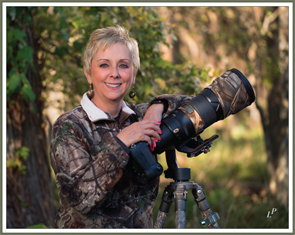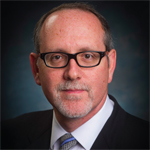Dr. Amanda King Elected President of Caribbean Association for Rheumatology
 The Caribbean Association for Rheumatology (CAR) elected Amanda King, MBBS(UWI), MRCP(UK), FRCP(Glas.), president during the 7th Annual CAR Scientific Meeting this summer. This year’s CAR meeting concentrated on education for general practitioners, because there are still some islands without a rheumatologist. She is the only rheumatologist on St. Lucia.
The Caribbean Association for Rheumatology (CAR) elected Amanda King, MBBS(UWI), MRCP(UK), FRCP(Glas.), president during the 7th Annual CAR Scientific Meeting this summer. This year’s CAR meeting concentrated on education for general practitioners, because there are still some islands without a rheumatologist. She is the only rheumatologist on St. Lucia.
Dr. King, along with a like-minded pharmaceutical representative and a few rheumatologists, organized the inaugural meeting of CAR in 2007. She says it all started with the founders of CAR creating their mission statement: “to form a group of rheumatologists and allied persons committed to the advancement of rheumatology and through collaboration, education, research and advocacy, improve the care of Caribbean patients with rheumatic disease.”
Since then, “CAR has created a directory of doctors and other practitioners, so rheumatology doctors can find each other to confer and refer,” says Dr. King. “Patients move from island to island, and the directory makes it easier for them to find new doctors.”
Before there was CAR, Dr. King along with a patient’s mother and a few others, founded the St. Lucia Arthritis and Lupus Association (SLALA) in 1997. Its mission was “to provide comfort, motivation and education for persons with arthritis, lupus and related illnesses such that the quality of their lives may be improved.” She says, “There was not a great deal of knowledge in the area. Arthritis was seen as an ‘old people disease.’ And people thought lupus was something you could catch.”
Patient education and treatment in the Caribbean has come a long way since then, with Dr. King involved with, if not driving, the progress.
Physician with 2 Passions
 Angela McCain, MD, joined Houston Methodist Rheumatology Associates early in the summer. She’s been a member of the Houston Methodist Sugar Land Hospital medical staff for years and she says, “joining Houston Methodist Rheumatology Associates is a great next step, one that will benefit my patients tremendously. I’m excited about working with my new colleagues.”
Angela McCain, MD, joined Houston Methodist Rheumatology Associates early in the summer. She’s been a member of the Houston Methodist Sugar Land Hospital medical staff for years and she says, “joining Houston Methodist Rheumatology Associates is a great next step, one that will benefit my patients tremendously. I’m excited about working with my new colleagues.”
Dr. McCain says, “When I did my rheumatology rotation, I was impressed with the enthusiasm of the head of the service. I thought if I could stay that enthusiastic, rheumatology might be the specialty for me.”
One enthusiasm isn’t enough for Dr. McCain, though. After her husband gave her a camera for Christmas several years ago, taking photos out her car window became what she did when she wanted time alone. Before long, she decided to specialize in her subjects.

One of Dr. McCain’s photos: A painted bunting is shown.
She says, “Being a photographer is like being a doctor: What kind of photographer are you? You can’t do landscapes or architectural photography without traveling. If you decide on wildlife, you can’t do mammals if your dog and cat are the only mammals you have contact with. [I had] already eliminated people—due to the ‘want to be alone’ aspect. [That] pretty much left [me] with birds. There’s always a bird around. No need to travel or be gone for long periods of time.”
Earlier this year, the George Memorial Library in Richmond displayed an exhibit of her bird and other nature photographs taken locally and on photo trips to Arizona, Alaska and South Africa.
Dr. McCain says that on photo field trips, there is almost always at least one other physician in the group. “Nature photography is the perfect foil to being a doctor—absolute opposite to dealing with people.”
First Rheumatologist as President of National Osteoporosis Foundation Board of Directors

Dr. Kenneth Saag, MD, MSc
Dr. Kenneth Saag, MD, MSc, is the new president of the National Osteoporosis Foundation (NOF) Board of Directors. He is the first rheumatologist to hold that position. He has been involved with NOF for eight years, serving as vice president for the past two years.
As president of NOF, Dr. Saag says he “hopes to partner with patients, physicians and groups responsible for directing policy and treatment of osteoporosis to increase testing and treatment. These are tumultuous times. There has been lots of progress in the past 20 years, but there has been a recent national decline in testing and treatment.”
He postulates that “reasons for the decline in testing and treatment could include increased awareness of the rare, but possible, side effects of treatment.” Dr. Saag has concerns that the decline in fractures from osteoporosis may be reversed in the future. “People don’t recognize the gravity of osteoporosis.” For example, he says, “Twenty-five percent of people who suffer a hip fracture die within the next year or two.”
Dr. Saag is vice chair of the Department of Medicine at the Alabama at Birmingham School of Medicine and a member of the American College of Rheumatology board of directors. Much of his career has focused on innovative clinical research and clinical care, and physician education in osteoporosis.
Ann-Marie Lindstrom is an independent writer and editor based in the Tucson, Ariz., area.
